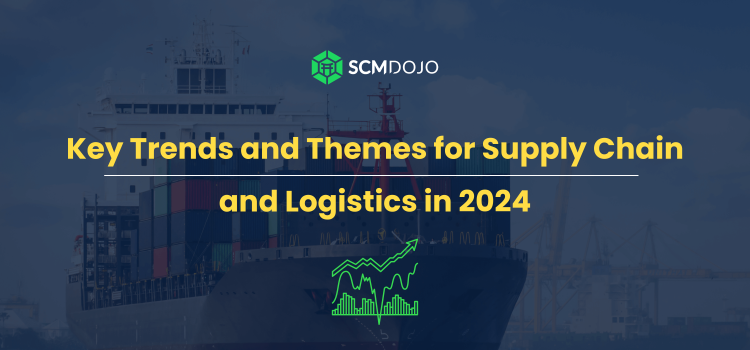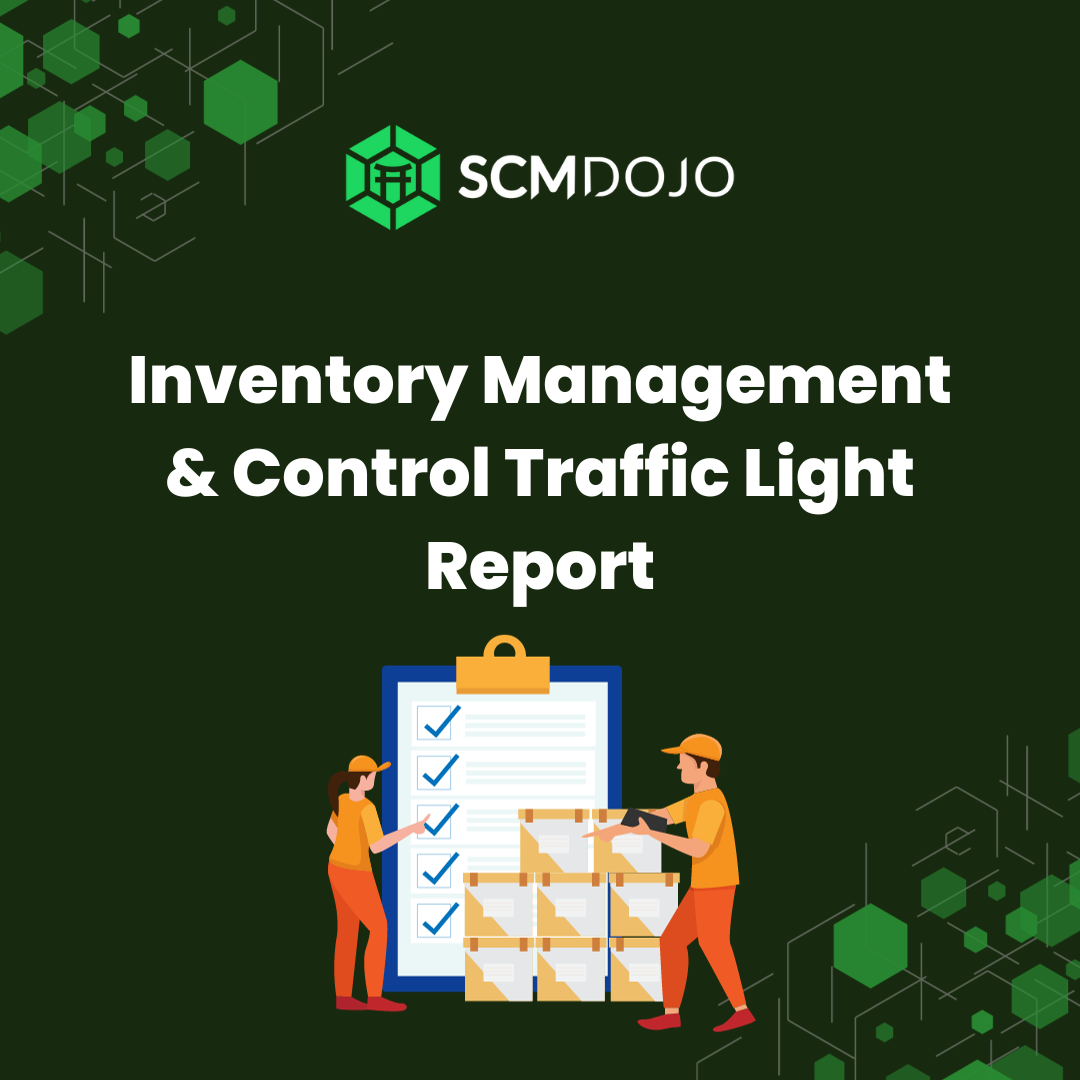In 2024, the logistics and supply chain industry will continue its transformative journey, driven by technological advancements and growing consumer expectations. And we know that numbers don’t lie. According to industry reports, over half of business leaders acknowledge the need for supply chain improvements, with 52% believing they could enhance their operations.
As companies move forward, they must be open to new technologies and adaptability to remain competitive.
Why should businesses follow the trends?
Why should businesses follow the trends? While it’s true that only some prefer to follow trends, data-driven decision-making is vital for businesses to remain competitive and relevant. One interesting fact is that companies that adopt digital transformation and supply chain innovation can expect operational cost savings of up to 30%, according to a recent McKinsey study.
Suppose you stay ahead of trends like AI optimization, blockchain transparency, and sustainable practices. In that case, you can unlock new efficiencies, meet the non-stop rising customer expectations, and future-proof your operations. Ignoring industry trends poses the risk of being left behind by more agile competitors.
Top Logistics Trends in 2024
As businesses seek higher efficiency and resilience, the supply chain trends for this year reflect a resumed focus on digitization, sustainability, and agility. Let’s see the most common trends in 2024.
AI-powered optimization
AI-powered optimizations change supply chain management, as they find ground in the machine learning and AI rise. These technologies can examine huge portions of data from multiple sources, and recognize patterns and tendencies that would be impossible for humans to discern.
Companies can achieve remarkable levels of demand forecasting accuracy with AI forecasts and even ghostwriting services can do that. As a result, it can help logistics companies to optimize inventory levels, reduce waste, and minimize the dreaded stockouts. According to a recent survey, 91% of manufacturers plan to “spice up” AI technology with supply chain data analytics by the end of 2024.
For example, the global e-commerce giant Amazon uses AI algorithms to analyze historical sales data, customer behavior, and external factors like weather and holidays to predict demand for millions of products across its vast network of warehouses. That enables them to optimize inventory levels, reduce costs, and deliver products to customers with lightning speed. And considering Amazon’s success, it’s safe to say the model works. Or at least that’s what we think.
Robotics and automation
Robotics and automation also play their part in supply chain operations. Well, they do it mainly in warehouses and distribution centers. Autonomous vehicles, drones, and robotic systems are now the new reality (yes, we’re here). They can simplify tasks such as picking, packing, and sorting, which can effectively reduce labor costs and minimize human errors.
A report by ABI Research estimates that more than 4 million commercial robots will be installed in over 50,000 warehouses globally by next year, and their market value can exceed the eye-watering $51 billion.
Let’s say you have a warehouse where robots work alongside human employees and help down the aisles to retrieve products and pack them for shipment. The robots can work around the clock, improve productivity, and allow human workers to focus on more complex and value-added tasks. It’s not that easy to imagine it now, we guess. But it’ll be the future, for sure. An expensive one, we dare say. Whether it will be worth it, only time will tell.
Blockchain and supply chain transparency
We can’t complete our list without blockchains. They are one of the new things that can move supply chain transparency and traceability in a new direction, and it’s happening now. The amplified visibility lets companies verify the authenticity and provenance of products, reduces the risk of counterfeiting, and helps ensure regulatory compliance.
A recent study by MarketsandMarkets predicts that the blockchain supply chain market will grow from $253 million in 2020 to $3.27 billion by 2026. Companies that want to communicate their blockchain initiatives effectively may benefit from the services of a ghostwriter Osterreich or a professional content creator.
What’s more, blockchain’s ability to track products from source to consumer empowers businesses to execute sustainable and ethical practices across their supply chains. The end customers can open detailed information about a product’s journey, so they can find everything about its carbon footprint, labor conditions, and even raw material sourcing.
For example, you can scan a QR code on a product and instantly access its entire journey from raw materials to the store shelf. Blockchain makes this level of transparency possible and empowers consumers to make informed choices based on sustainability, ethical sourcing, and carbon footprint.
Agile and resilient supply chains
Agility has become an irreplaceable component of thriving supply chain strategies in the face of global disruptions (especially those happening lately in the Middle East). Businesses of any size must be prepared to adjust quickly to altering consumer demands, supply shortages, and unforeseen events. It requires a bold approach to risk management, diversifying supply sources, and taking advantage of real-time data and analytics to pinpoint potential issues before they escalate.
For example, during the COVID-19 pandemic, many companies faced unprecedented challenges in sourcing raw materials and delivering products to customers. Those with agile and resilient supply chains were better equipped to manage these disruptions and quickly pivoted to alternative suppliers and distribution channels to maintain business continuity.
Achieving supply chain agility necessitates a shift toward more flexible and collaborative operating models. Companies must cultivate strong partnerships with suppliers, logistics providers, and other stakeholders and enable easy communication and coordinated responses to disruptions. Investing in digital technologies, such as cloud computing and IoT sensors, can also provide end-to-end visibility and stimulate rapid decision-making.
Building resilient supply chains also revolves around alternative sourcing strategies, such as nearshoring or multi-shoring, to reduce dependency on any single region or supplier. Geographic diversification can mitigate the impact of localized disruptions and ensure business continuity. Ultimately, organizations that prioritize agility and resilience will be better equipped to manage the intricacies of the modern supply chain industry, maintain competitive advantage, and deliver superior customer experiences.
Sustainable supply chains
As consumers become increasingly environmentally conscious, businesses are under growing pressure to adopt sustainable practices throughout their supply chains. From reducing carbon emissions to minimizing waste and ensuring ethical sourcing, sustainability is no longer a nice-to-have but a business imperative.
Companies are looking for new solutions to reduce their environmental footprint, such as optimizing transportation routes to minimize fuel consumption, using renewable energy sources in warehouses and distribution centers, and implementing circular economy principles to extend the life of products and materials.
For example, a leading fashion retailer might partner with a textile recycling company to collect and repurpose old garments, reducing waste and creating new value from discarded materials. By communicating these sustainability initiatives to customers, companies can build brand loyalty and differentiate themselves in a crowded market.
Omnichannel fulfillment
E-commerce has transformed consumer expectations, with customers demanding seamless and convenient shopping experiences across multiple channels. Omnichannel fulfillment, which integrates online and offline channels to provide a unified customer experience, has become a critical business capability.
It means enabling customers to shop online and pick up in-store or to return online purchases at physical locations. It also applies inventory management optimizations across many channels to make sure that products are available when and where customers want them. And that’s paramount, but some businesses fail to deliver here!
For example, a brick-and-mortar retailer might use its physical stores as mini-distribution centers, fulfilling online orders from in-store inventory to reduce shipping times and costs. By leveraging technology to provide real-time inventory visibility and enable seamless cross-channel experiences, companies can meet the evolving needs of today’s connected consumers.
Advanced Analytics and predictive maintenance
The ability to harness the power of data is becoming increasingly critical in supply chain management. Advanced analytics, powered by AI and machine learning, can help companies gain deeper insights into their operations, identify inefficiencies, and make data-driven decisions.
Predictive maintenance is one area where advanced analytics is making a significant impact. By analyzing data from IoT sensors and other sources, companies can predict when equipment is likely to fail and schedule maintenance proactively, reducing downtime and improving overall equipment effectiveness (OEE).
For example, a manufacturing company might use predictive maintenance to monitor the health of its production line, detecting anomalies and scheduling repairs before breakdowns occur. It reduces maintenance costs and improves product quality and customer satisfaction.
Conclusion
As we look ahead, the supply chain and logistics sector will undoubtedly face new challenges and opportunities. Businesses that prioritize digital transformation, sustainable practices, and agile strategies will be well-positioned to thrive in this dynamic environment.
Successful organizations will leverage cutting-edge technologies, foster collaboration across the supply chain ecosystem, and cultivate a culture of continuous improvement. By doing so, they can achieve operational excellence, meet evolving customer demands, and drive long-term growth in an increasingly competitive industry where every cent matters.
The future of supply chain management is one of innovation, resilience, and adaptability. As companies navigate the complexities of the modern business landscape, those who embrace change and harness the power of technology will be the ones who succeed. By staying ahead of the curve and continuously pushing the boundaries of what’s possible, businesses can build supply chains that are efficient, effective, sustainable, and future-proof.
References
https://news.sap.com/2022/10/us-supply-chains-in-2023-new-research-forecast/
https://www.mckinsey.com/~/media/McKinsey/Industries/Healthcare%20Systems%20and%20Services/Our%20Insights/Automation%20at%20scale%20The%20benefits%20for%20payers/Automation-at-scale-The-benefits-for-payers.pdf
https://www.smbguide.com/supply-chain-statistics/
https://www.abiresearch.com/press/revenues-robotics-deployed-warehouses-cross-us51-billion-2030/
https://www.marketsandmarkets.com/Market-Reports/blockchain-supply-chain-market-90851499.html



